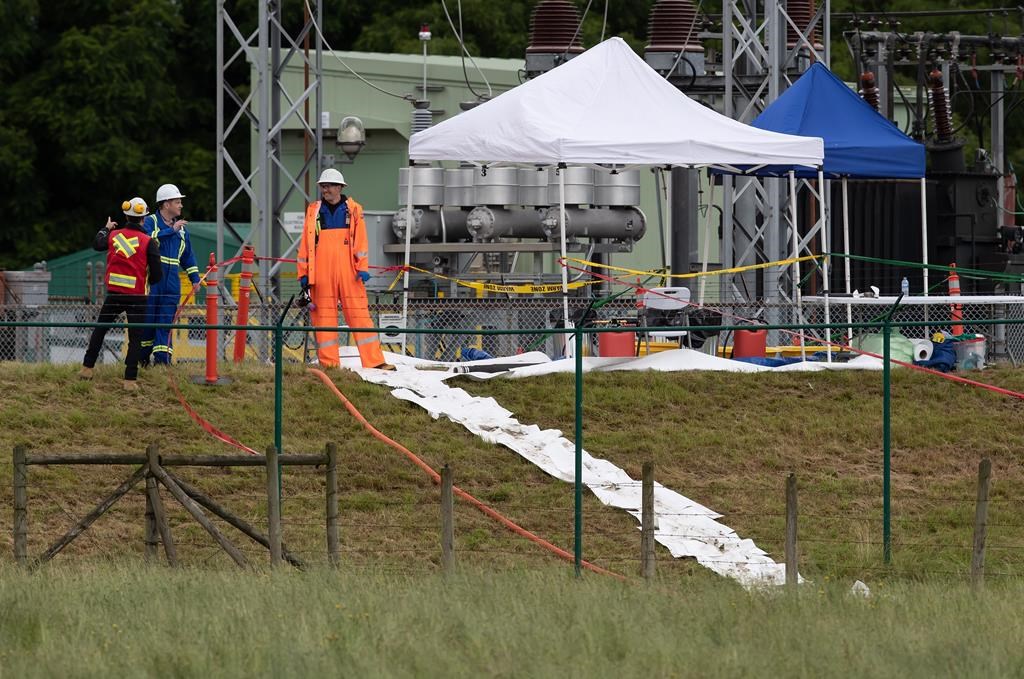A Transportation Safety Board report says the failure of a fitting on a section of narrow tubing at a Trans Mountain pumping station in British Columbia was the cause of a crude oil spill last year.

The investigation report into the spill on June 12, 2020, at the Trans Mountain Sumas pump station in Abbotsford confirms as much as 190,000 litres of crude, roughly 1,200 barrels, leaked when the fitting separated on the one-inch tube.

A board report released Tuesday says tests show the compression fitting was not properly tightened when it was installed in 2015 on a tube that carries a small amount of oil to a section of the pump station for analysis.
The pipeline was shut down within an hour of the spill at Trans Mountain’s control centre in Edmonton, but the report says it took another four hours to find and manually close valves to the tube, spilling oil into a culvert, the water table and a neighbouring agricultural field.
No one was hurt and no evacuation was ordered, but the safety board report says a “multi-year remediation plan” will be needed to recover contaminants in the area surrounding the pump station.
Trans Mountain’s post-spill improvements include remotely operated closure valves and a lined containment area around the above-ground tubes, along with development of a system to check the condition of existing tubing systems.
A safety message at the end of the report says it’s “important” that pipeline companies inspect tubing systems to ensure proper installation.
“In the event of an unplanned product release, it is essential that station (remote shutdown) and isolation systems be properly configured to minimize the quantity of the release,” the report says.
It also says secondary containment systems, such as the oil-water separator that was overwhelmed at the Sumas pump station, “must have a means of isolation in order to prevent any off-site migration of the released product.”
Many of the upgrades planned for the Sumas pump station are expected to be complete by this summer, the report says.



Comments